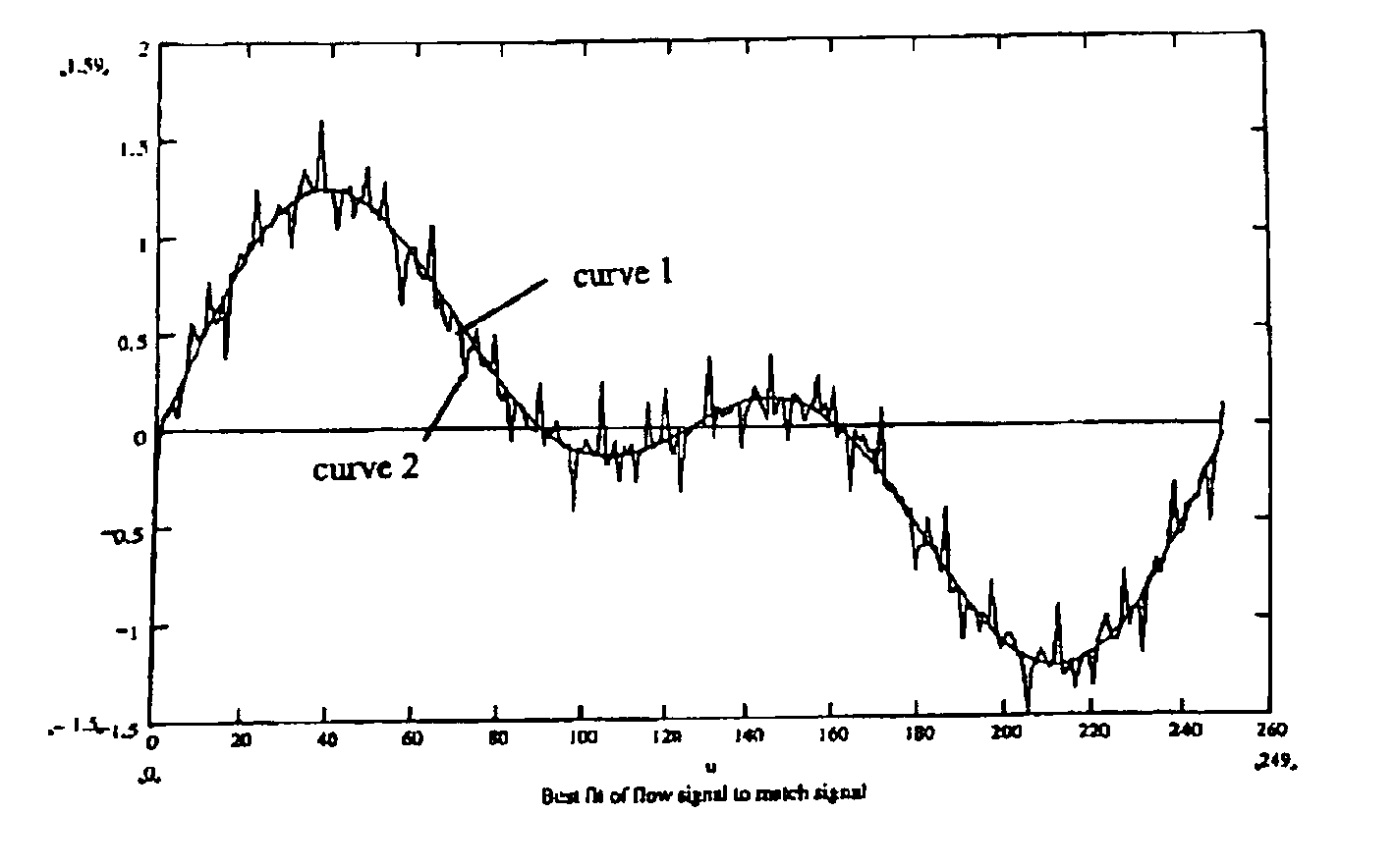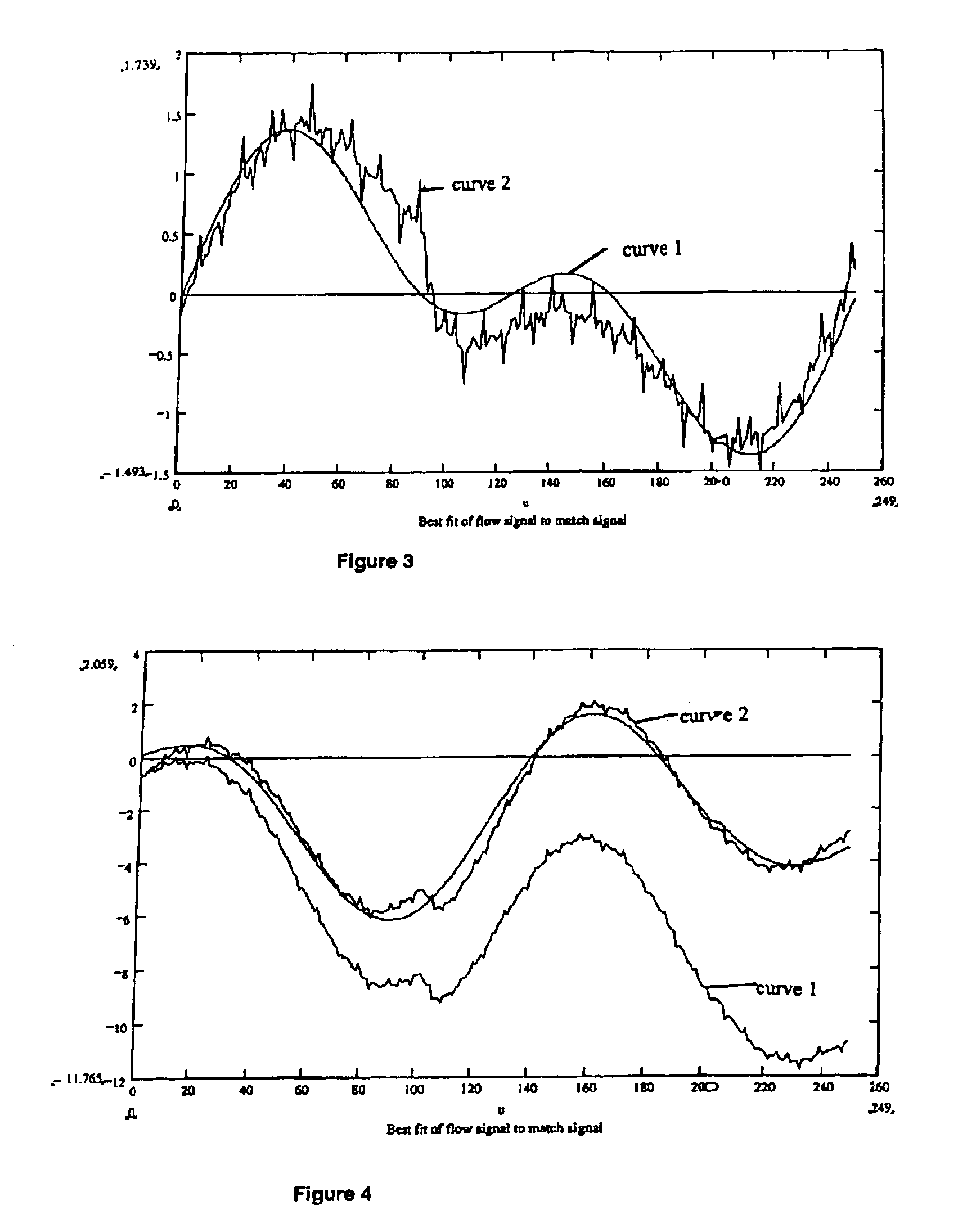Electromagnetic flow meter
a flow meter and electromagnet technology, applied in the direction of mechanical measurement arrangements, mechanical roughness/irregularity measurements, instruments, etc., can solve the problems of introducing its own problems, affecting the ability to determine the flow in a static fashion, using such a frequency, etc., to enhance the prominence of turning points in the waveform, enhance accuracy, and diminish the effect of returns
- Summary
- Abstract
- Description
- Claims
- Application Information
AI Technical Summary
Benefits of technology
Problems solved by technology
Method used
Image
Examples
Embodiment Construction
[0010]According to a first aspect the invention provides a method of obtaining a measure of flow from an electromagnetic flow meter comprising applying a composite excitation waveform comprising a plurality of frequency components; receiving an output from the meter; and correlating sampled output data from the meter with a composite correlation waveform based on the composite excitation waveform to derive a measure of flow.
[0011]In this method, by taking the novel step of correlating with a composite waveform, rather than the conventional method of correlating each frequency component with a sine wave, a number of advantages can be obtained. Although the composite waveform will effectively contain multiple frequency components, it has been found that it is not necessary to process each component separately and thus measurement rate is not limited by the lowest frequency component. Furthermore, additional information is obtained from the combination of the components (the shape of t...
PUM
 Login to View More
Login to View More Abstract
Description
Claims
Application Information
 Login to View More
Login to View More - R&D
- Intellectual Property
- Life Sciences
- Materials
- Tech Scout
- Unparalleled Data Quality
- Higher Quality Content
- 60% Fewer Hallucinations
Browse by: Latest US Patents, China's latest patents, Technical Efficacy Thesaurus, Application Domain, Technology Topic, Popular Technical Reports.
© 2025 PatSnap. All rights reserved.Legal|Privacy policy|Modern Slavery Act Transparency Statement|Sitemap|About US| Contact US: help@patsnap.com



